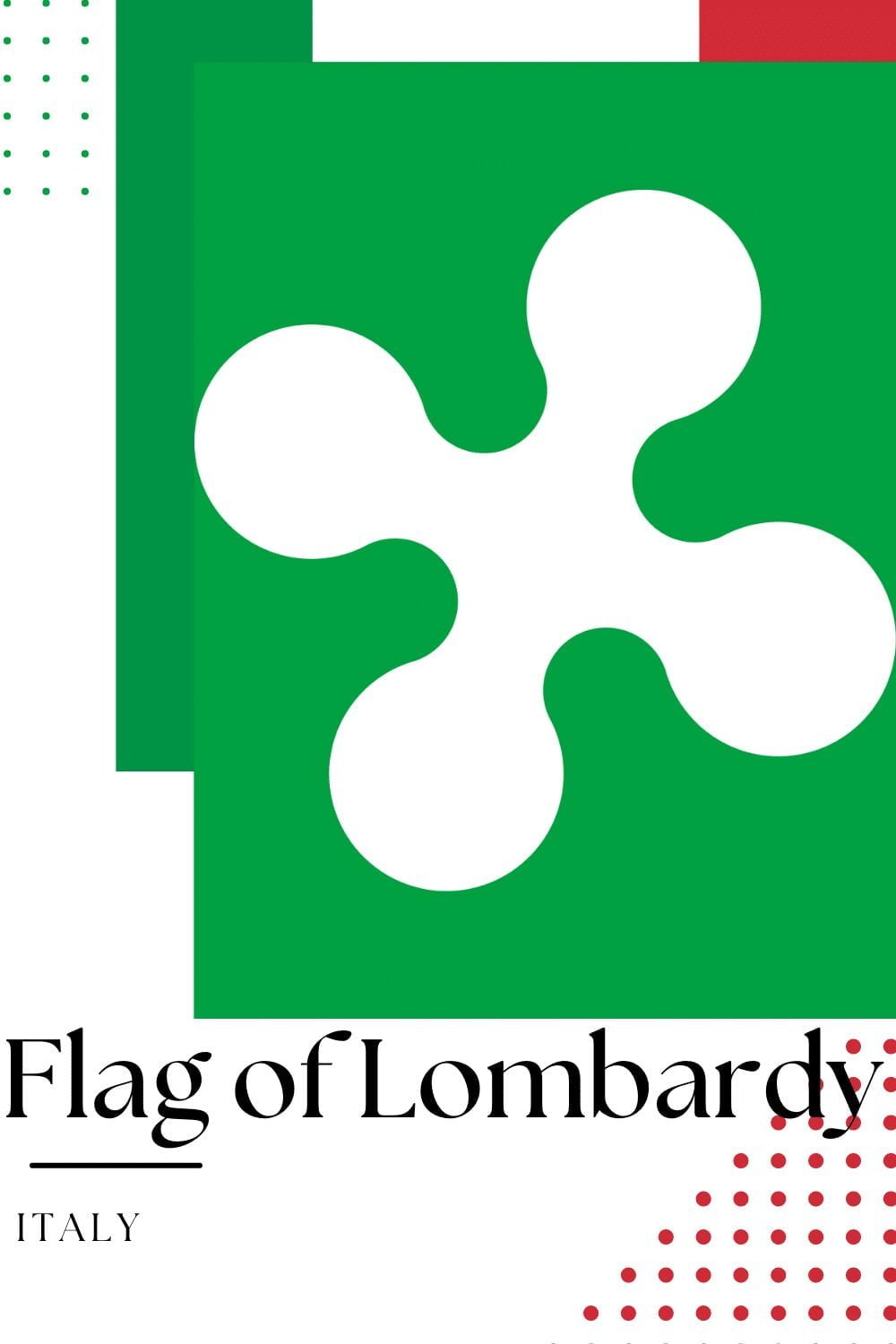Flag of Lombardy
The flag of Lombardy is a rectangular flag with a green field and a white Rosa Camuna in the centre. The green field represents the Po Valley, which is an important agricultural and industrial region in Lombardy. The white Rosa Camuna represents the light and is derived from a prehistoric drawing made by the ancient Camuni. The modern version of the Rosa Camuna was designed by Bruno Munari, Bob Noorda, Roberto Sambonet, and Pino Tovaglia in 1975, and it became the official regional coat of arms in the same year.
The flag of Lombardy is officially recognized by the Italian government and is flown by the Lombardy regional government and other official bodies in the region. It is also widely used by Lombardy residents and supporters of the region as a symbol of regional pride and identity. The flag was officially adopted by the Regional Council in 2019, although it had been used de facto since 1975.

Lombardy name origin
The name “Lombardy” is derived from the Longobards, a Germanic people who ruled over the region from the 6th to the 8th centuries. The Longobards, also known as the Lombards, were a tribe of warrior-nomads who migrated from what is now Denmark and settled in the region that is now Lombardy. The name “Lombardy” is derived from the Lombard language, which was spoken by the Longobards.
The Longobards established a kingdom in Lombardy, which included parts of present-day Italy, Austria, Slovenia, and Croatia. The kingdom was conquered by the Franks in 774, and Lombardy became part of the Carolingian Empire. Over the centuries, Lombardy has been ruled by a number of different powers, including the Holy Roman Empire, the Napoleonic Empire, and the Kingdom of Italy. Today, Lombardy is a region of Italy with a rich cultural and historical heritage.
Lombardy Region
Lombardy is a region located in northern Italy. It is the wealthiest and most populous region in Italy, and it is home to a number of major cities, including Milan, the financial and fashion capital of Italy. The region is known for its economic and cultural importance, as well as its beautiful natural landscapes, including the Italian Alps and Lake Como.
Lombardy is located in the Po Valley, which is an important agricultural and industrial region in Italy. The region is known for its production of rice, wheat, corn, and other crops, as well as for its manufacturing and high-tech industries. Lombardy is also home to a number of important cultural and historical sites, including the Basilica of San Lorenzo, the Castello Sforzesco, and the Brera Art Gallery.
The region is governed by a president and a regional council, and it has a strong regional identity. The official language of the region is Italian, although a number of other languages, including German and French, are also spoken in the region.


